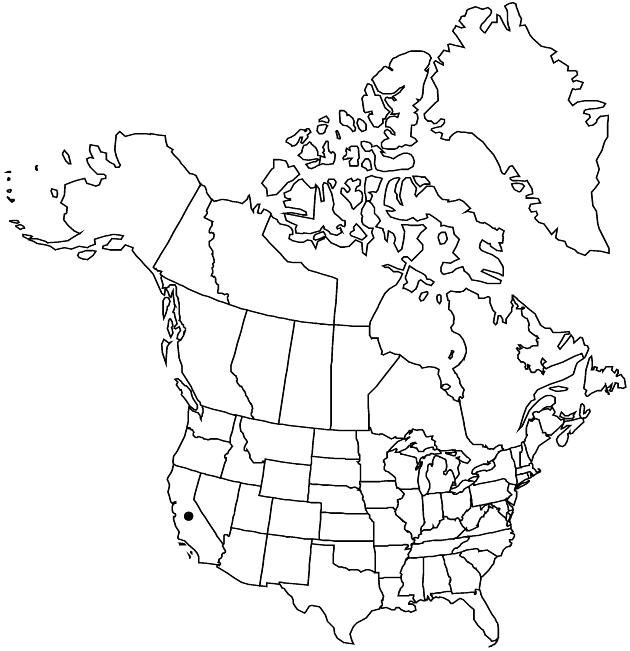Erigeron blochmaniae
Pittonia 3: 25. 1896.
Perennials, 4–8 cm, taprooted, caudices woody, branches ascending, sometimes rhizomelike. Stems ascending-erect, densely and closely puberulous to villosulous (hairs stiffly crisped, minute), eglandular. Leaves cauline; blades linear to narrowly oblanceolate, 15–30 × 1–3 mm, usually even-sized, margins entire, densely and closely puberulous to villosulous, eglandular. Heads 1 or 2–5 in loosely corymbiform arrays. Involucres 4.5–6 × 9–14 mm. Phyllaries in 3–5 series (with broad, orange middle area and thick, white margins), densely canescent-hirsutulous (hairs crinkly), densely minutely glandular. Ray florets 45–72; corollas white to bluish, ca. 8–11 mm, laminae not coiling or reflexing. Disc corollas 4.6–5 mm (throats slightly indurate, not inflated). Cypselae 2.2–2.8 mm, 2-nerved, faces glabrous; pappi: outer of setae, inner of 21–36 bristles. 2n = 18.
Phenology: Flowering Jul–Oct.
Habitat: Sand dunes and hills
Elevation: 0–50 m
Discussion
Of conservation concern.
Erigeron blochmaniae is recognized by its puberulous stems, relatively large heads, distinctive phyllaries, and glabrous cypselae.
Selected References
None.
